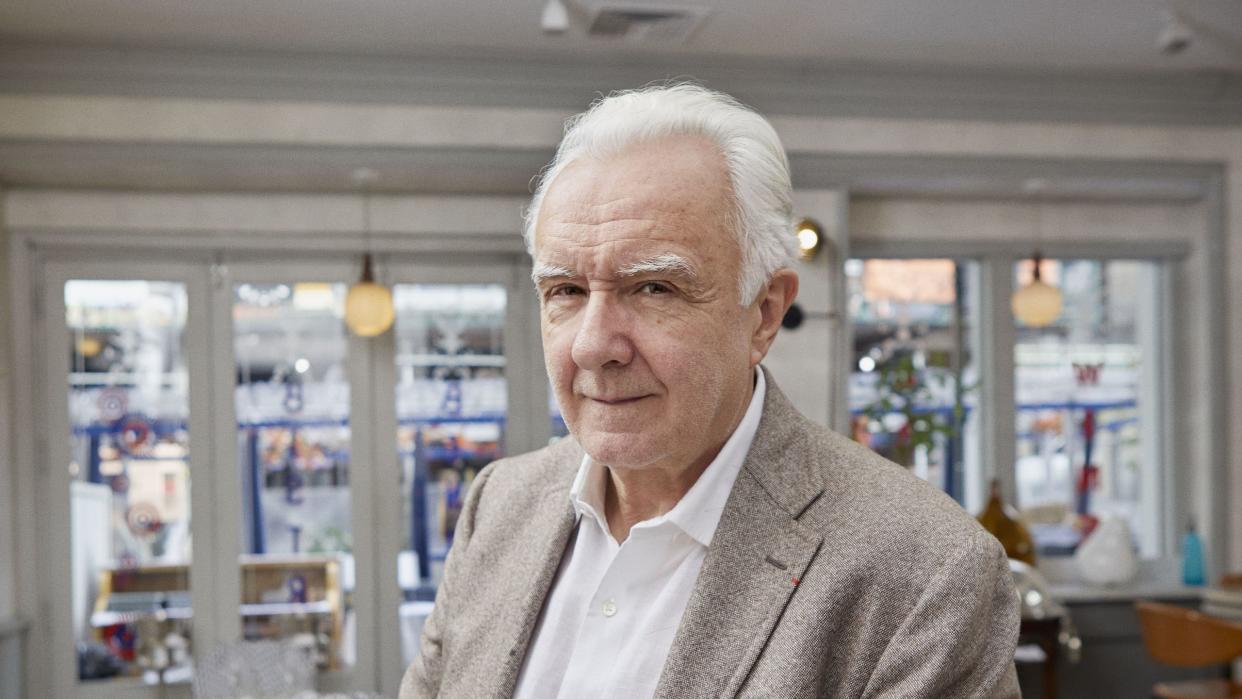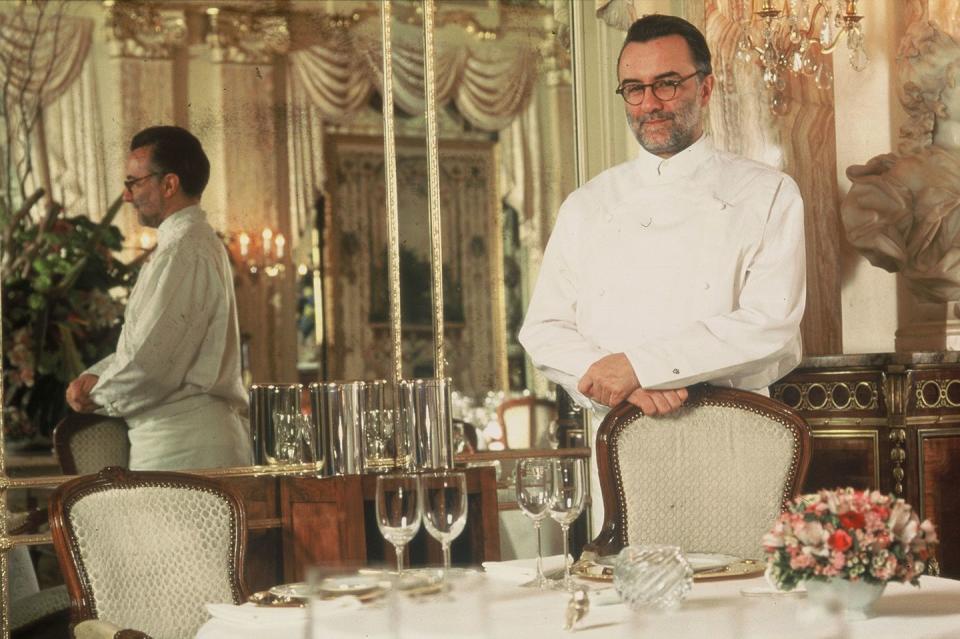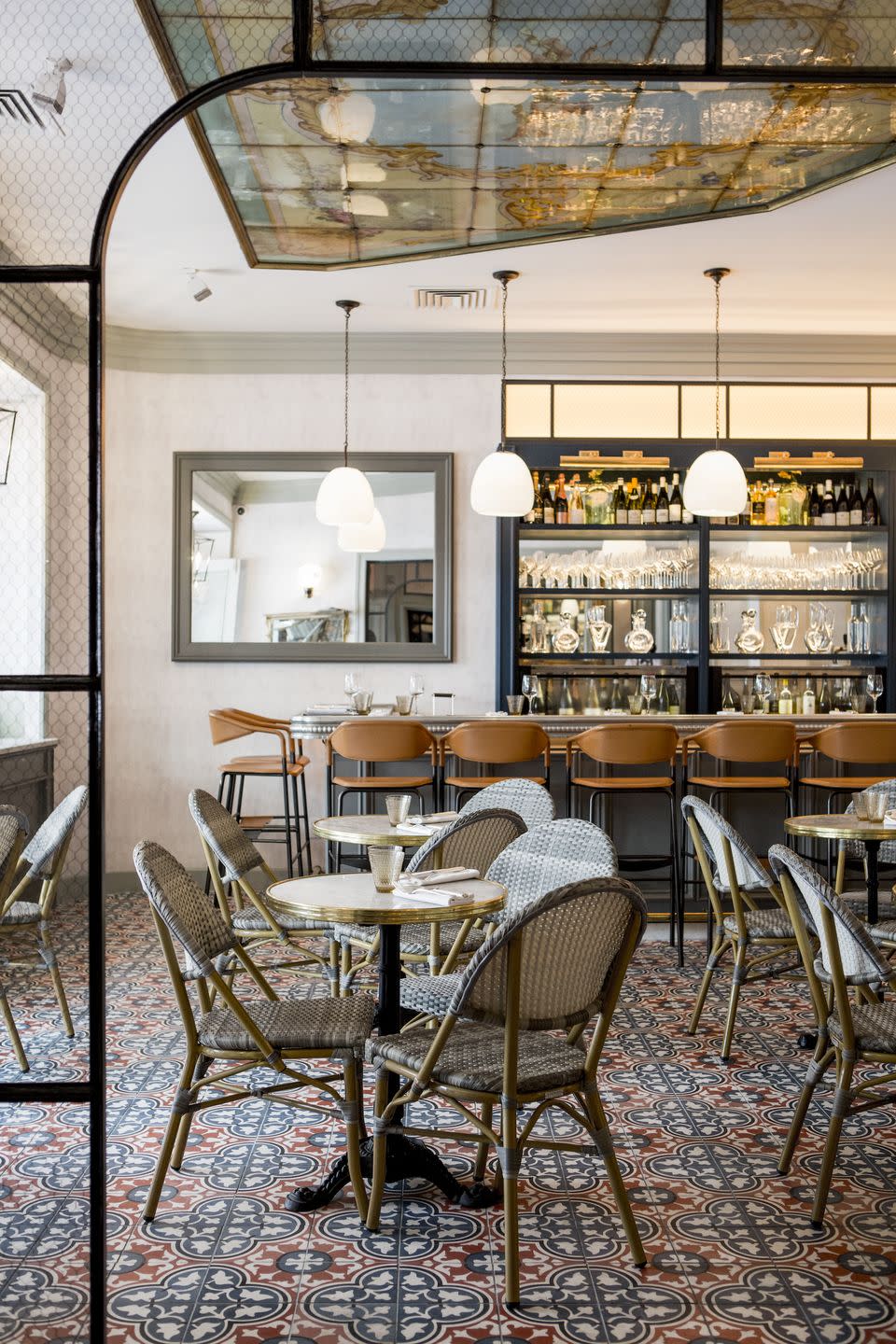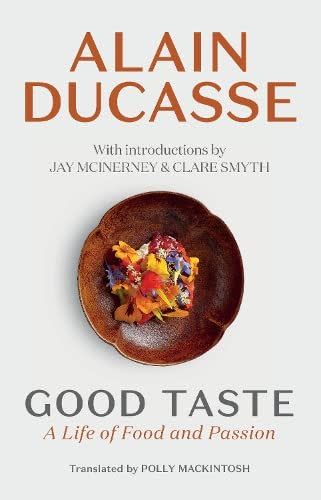The Frenchest Chef in the World

"Hearst Magazines and Yahoo may earn commission or revenue on some items through these links."
A few weeks ago, Alain Ducasse, wizened keeper of all French culinary tradition, met me in a walnut-walled 19th-century Bordeaux apothecary. There he sat, slightly slumped, his hair snowy white, his eyes peering over his glasses beneath wild eyebrows. Beside him was Emmanuelle Perrier, his communications director and longtime translator. I wish we had been in France, but it was Thursday and I had to pick up my kids from school in Red Hook, Brooklyn. The incessant honking of horns was a distant but audible reminder that we were actually in midtown Manhattan. The room—dubbed L’Officine—is on the second floor of Ducasse’s New York bistro, Benoit, housed in the former home of La Côte Basque. In typical Ducassian fashion, the chef had the apothecary disassembled and shipped by boat to New York when he opened Benoit in 2008. But it makes sense to meet here. For one, it’s quiet. For another, Ducasse is like the Wayne Coyne of the culinary world, a chef so French he seems to travel in a bubble of the Fifth Republic.
That the chef isn’t as well known in America—though he’s still well known—belies the scope of his global influence. Ducasse Enterprises employs hundreds of people. He has 34 restaurants, many in France, ranging from bistros to haute cuisine to country inns. He’s huge in Japan, a god in Qatar, a deity in China but has only two outposts—including Benoit—in America. (The other, La Rivea, is in the Delano Las Vegas.) The man has amassed 21 Michelin stars. He has an ice cream factory and a chocolate factory and a school in the suburbs of Paris. And an ambitious headquarters called Le Maison du Peuple—the house of the people—is slated to open later this year in Clichy. Much of this is related in his new book, Good Taste: A Life of Food and Passion. The slim volume is less a memoir than an extended curriculum vitae.

But he seems, for his part, pretty disinterested in America. For instance, he doesn’t speak the language. So unless one speaks French or, alternatively, doesn’t feel shame in trying, all questions posed to Ducasse are actually directed to Perrier in English, translated for the chef, and answered in French, which Perrier then translates into English. Ducasse talks quickly and quietly and frequently overlaps with what Perrier says. Because Perrier answers in the third person, an almost divine aura is conferred on Ducasse. The whole effect is that he’s some sort of sage and she an oracle. One learns a lot, but questions are rarely answered.
For hardcore Ducasse nerds, Good Taste is a fascinating read. For the rest of us, it’s fine. He is a man rightly proud of all he’s accomplished. The book is a mix of LinkedIn page and succession plan. At 67, Ducasse is stepping back, maybe one step, maybe a flurry of them. “This year, I made a resolution,” he writes, “marking a shift that is crucial for me and the rest of the group. I want to encourage a generation of talented people in their thirties and place them in the highest positions.” As Perrier adds, “He surrounds himself more and more with talent in their 30s because he likes to be challenged. He’s very curious, as you know, and he is fed and nourished by the different mindset, more than he would be with colleagues of his age.”

Because I am 40, mid-career and only moderately successful, I was really interested in where, in Ducasse’s Weltanschauung, people in their middle age, like me, fall. Between one’s 30s and one’s 60s is a lifetime of, among other things, financial obligations, desire for creative fulfillment, and probably a crisis or two thrown in there. If he’s handing the reins to folks in their 30s, does that mean that people like me, who thought we hadn’t hit our peak yet, actually have? Christ. It’s ten o’clock. Too early for pastis, or does the wood paneling from France protect us?
I needn’t have worried so much. As Ducasse clarifies, his chosen cohort are people in their 30s and 40s. Not today, senescence! It’s true, his restaurants tend to be run by chefs who are quite young. Before Alberto Marcolongo, an Italian, took over Benoit, it was headed by an amazingly talented 33-year-old named Laetitia Rouabah, who has since gone on to run La Fontainebleau in Las Vegas. Much of Ducasse’s work now at, for instance, his many schools, with their heavily international student body, involves inculcating fresh talent from around the world.
That was one question I had for the man, but I was also hoping for a tour d’horizon of his creativity over the years. Were, for instance, his 20s revolutionary, his 30s spent in refinement, his 40s in the flush of success, his 50s in retrenchment, and his 60s in reevaluation? Has he been creative in the same way since he was 14, working at a roadside cafe in Mont-de-Marsan or later with Michel Guérard and Alain Chapel? Or has his creativity changed?
“The point is not to be creative,” he says. “Creativity is not the word that best describes him,” says Perrier. “He prefers to talk about collections.” Ducasse analogizes himself to Karl Lagerfeld, who created collections from prêt-à-porter to haute couture, more than Picasso, whose periods represented the evolution of one man’s aesthetic.
But how does the creativity feel different, I wondered, as he prepares to transition to a new phase of his involvement? Ducasse is uninterested in answering the question. According to Perrier—this was not translated—he never speaks about his feelings. But a clue could be gleaned in one of the more controversial claims he makes both in the book and in person. Namely, as he says, that “French gastronomy is the best in the world at selecting products, preserving, preparing, and cooking ingredients.” When I object, politely, that many people/nations/cultures might disagree, Perrier, translating Ducasse, says, “This is not Ducasse saying it. This is fact.”

Good Taste: A Life of Food and Passion
amazon.com
$21.49
To be clear, Ducasse isn’t saying that French taste is superior, but he is saying that French technique is the universal key that fits the culinary lock. “French cuisine is a tool box,” he avers. “We are teaching how to select a product, how to prepare, how to season them, how to cook them in service of the Indian taste, Brazilian taste, Filipino taste, etc.... What we tell the students is that we are here to help give them the tools to maintain their own culinary identity.”
Now, how people feel about this claim—I, for instance, am skeptical—may vary. However, it has been the clear north star for Ducasse since he began, a faith bathing the world around him with a steady, clear luminosity. This idea, instilled in Ducasse when he was quite young, in the kitchen of his grandmother in Chalosse, and deepened in the temples of haute gastronomy, has animated him his entire life. His commitment to the principle is pure and unshakable. It never changes, never ages. I wonder if such faith can be forged in one’s middle life or whether it must be baked into the certainty of a child. I wonder if those of us who haven’t found our own catechism can write it later on? And I wonder if the objective truth of Ducasse’s claim matters one way or the other. For it has fueled an empire of delicious things, brought a bit of France to New York, and served its apostle, the Frenchest chef in the world, well.
You Might Also Like

